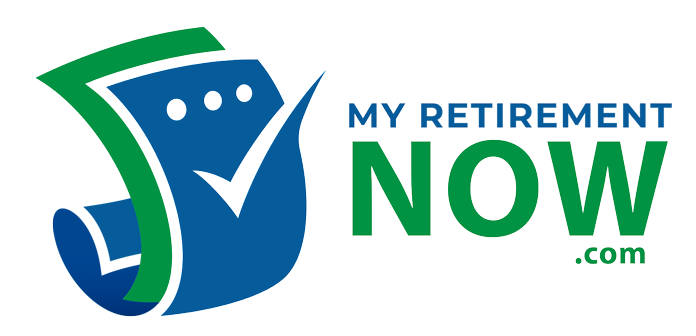Individual Retirement Accounts (IRAs)
Hiring the right advisor can have a huge impact on achieving your goals.
Setup Your account & plan your Retirement Now.
Individual Retirement Accounts (IRAs) are savings tools that offer tax advantages for individuals to save for retirement.
There are several types of IRAs, but the most common are Traditional IRAs, Roth IRAs and Sep-IRA’s.Understanding the key differences between these accounts is crucial for making the right choice.

IRA’s
Contributions are typically tax-deductible, but withdrawals during retirement are taxed as ordinary income.
Roth IRA: Contributions are made with after-tax dollars, but qualified withdrawals in retirement are tax-free.
A Simplified Employee Pension (SEP-IRA) is a type of retirement savings plan designed primarily for self-employed individuals and small businesses. Here’s how it works:
Eligibility: Any employer, including sole proprietors, partnerships, or corporations, can establish a SEP-IRA. Employees who are at least 21 years old, have worked for the employer in at least three of the last five years, and received at least $750 in compensation during the year qualify for contributions.
Contributions: Employers fund SEP-IRAs by making contributions to their employees’ accounts, including their own if they are self-employed. Contributions are discretionary, meaning employers can choose how much to contribute each year, up to a certain limit.
Contribution Limits: For the 2024 tax year, employers can contribute up to 25% of each eligible employee’s compensation or a maximum of $66,000, whichever is less. Self-employed individuals use a different calculation based on their net earnings.
Tax Benefits: Contributions made to a SEP-IRA are tax-deductible for the business, which can help reduce taxable income. Earnings within the SEP-IRA grow tax-deferred until funds are withdrawn during retirement.
Withdrawals: Generally, withdrawals from a SEP-IRA are subject to income tax, and early withdrawals before age 59½ may incur a 10% penalty, similar to traditional IRAs.
Simplicity: SEP-IRAs are relatively easy to set up and maintain, with minimal paperwork compared to other retirement plans, making them appealing to small business owners.
Flexibility: Employers are not required to contribute every year, providing flexibility depending on the business’s financial situation. (this needs to go in as well on Lets set up your IRA)
2. Setting Up an IRA
The process for opening an IRA is straightforward, but it’s important to take a few critical steps:
Determine Your Eligibility
Traditional IRA: Anyone with earned income under 70½ (up to 2019) or under the SECURE Act (post-2020, there’s no age restriction).
Roth IRA: Income limits apply; single filers must earn less than $153,000, and joint filers must earn less than $228,000 (as of 2023).
Evaluate providers based on:
- Fees
- Investment options (mutual funds, stocks, ETFs)
- Minimum contribution requirements
- Customer service
Complete the Application
This typically involves providing:
- Personal identification information (Social Security number, address, etc.)
- Employment details
- Beneficiary information
- Choice of investments
d. Fund Your IRA
You can fund your account by:
- Direct contributions (up to $6,500 annually, or $7,500 if you’re 50 or older in 2023).
- Rollover from another retirement account (401(k), 403(b), etc.).
- Transfer from an existing IRA.
3. Managing Your IRA
Once your account is set up, it’s important to effectively manage it to maximize your retirement savings.
a. Regular Contributions
- For both Traditional and Roth IRAs, the annual contribution limit is $6,500 (or $7,500 if over 50). Make sure you contribute the maximum allowable each year to take full advantage of tax benefits
b. Choosing Investments
IRAs allow you to invest in a variety of assets. Common choices include:
- Stocks: Offers growth potential but carries higher risk.
- Bonds: Provides stable returns but lower growth compared to stocks.
- Mutual Funds/ETFs: Diversified funds, which help reduce risk by spreading investments across various companies or sectors.
- Certificates of Deposit (CDs): Low-risk savings options with fixed returns.
c. Rebalance Your Portfolio
Over time, your investments may drift away from your original target allocation due to market fluctuations. It’s crucial to periodically rebalance your portfolio to maintain your risk profile. For example, if stocks have performed well, you may need to sell some and buy bonds to keep your investment strategy balanced.
d. Taking Withdrawals
- Traditional IRA: Withdrawals are required by age 73 (for those born between 1951–1959) and age 75 (for those born 1960 or later) through Required Minimum Distributions (RMDs). Failure to withdraw can result in penalties.
- SEP-IRA’s follow the same rules
- Roth IRA: No RMDs are required. Withdrawals can be made tax-free if you’ve held the account for at least five years and are over the age of 59½.
f. Understand Penalties
- Early withdrawals (before age 59½) from a Traditional IRA and SEP-IRA may incur a 10% penalty plus income taxes.
- For Roth IRAs, early withdrawals of earnings may also be subject to a penalty unless exceptions apply (first-time home purchase, qualified educational expenses, etc.).
g. Rollover and Transfers
- Rollover: You can transfer funds from a 401(k) or other retirement accounts into an IRA or SEP if now self employed . This is tax-free if done within 60 days.
- Direct Transfer: You can move funds from one IRA to another without penalties or taxes through a trustee-to-trustee transfer.
4. Strategies for Optimizing Your IRA
To maximize the benefits of your IRA, consider the following strategies:
a. Convert Traditional to Roth IRA
If you expect to be in a higher tax bracket in retirement, converting a Traditional IRA to a Roth IRA may be advantageous. You’ll pay taxes on the amount converted, but future withdrawals from the Roth IRA will be tax-free.
b. Backdoor Roth IRA
If your income exceeds the limits for direct Roth IRA contributions, you can contribute to a Traditional IRA and then convert it to a Roth IRA. This is known as a “Backdoor Roth IRA.”
c. Maximize Catch-Up Contributions
If you’re over 50, take advantage of the additional $1,000 catch-up contribution.
5. Review Your IRA Regularly
As you approach retirement, review your IRA and adjust your strategy as necessary:
- In your 30s and 40s: Focus on growth by investing in stocks and higher-risk assets.
- In your 50s and 60s: Begin transitioning to more conservative investments like bonds and CDs to preserve capital.
- Pre-retirement: Ensure you have a withdrawal strategy in place, considering RMDs (if applicable) and tax implications.
Conclusion
Setting up and managing an IRA is a crucial part of retirement planning. Whether you choose a Traditional, Roth IRA or a SEP. The key is to regularly contribute, diversify your investments, and monitor your account performance to ensure your savings grow and align with your retirement go
Our Advisors are ready when you are.

Start planning NOW.
Learn why over 100,000 individuals trust My Retirement Now to help them manage assets and achieve your financial goals.
Ready To Rock? Call us.
